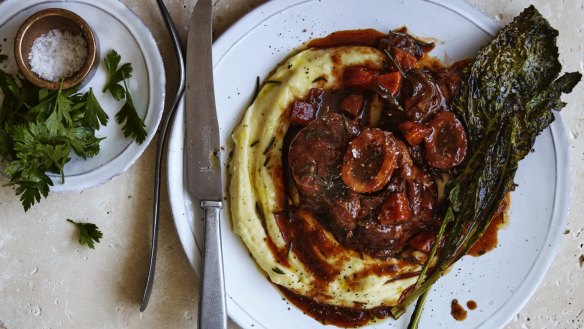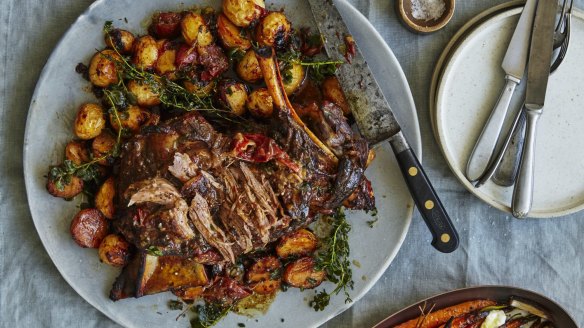The golden rules of braising and slow-cooking

Braising is slow-cooking at its finest, a pot-roasting technique that transforms cheaper, tougher cuts of meat over time into rich, tender dishes, creating a sauce full of complex, satisfying flavour. Key steps are browning the meat, deglazing it with wine, and knowing when to season.
Browning is one of the hidden secrets of braising. When meat is exposed to high heat, a large number of chemical reactions take place. The searing effectively allows the proteins and natural sugars to brown into a caramel richness, creating new flavour compounds in what is known as the Maillard reaction.

To brown, by the way, means brown – the darker and nuttier the colour you achieve, the more the Maillard reaction kicks in. Brown the meat on all sides in a single layer in a heavy enamelled cast-iron pan, in as many batches as necessary. Over-crowding the pan is problematic, causing the meat to drop its juices and steam instead, which will prevent it from browning. If the meat has been floured, the flour that sticks to the bottom of the pan during the process will also brown, and will help thicken the resulting sauce.
Deglazing, from the French deglacage, means adding a liquid such as water, wine or stock to the browning pan. (Most cooks prefer a dry white wine for its acidity or a medium-bodied red wine, for its flavour.) By bringing the wine to the boil, and scraping up all the sticky little bits of caramelised meat on the base of the pan with a flat-bladed wooden spoon, you enrich the sauce while at the same time evaporating any raw alcohol. This is something we can do every time we brown meat, or even pan-fry sausages: deglaze with a dash of wine, scrape it up, and turn all that bonus flavour into a great sauce.
Seasoning food intensifies the natural flavours of meats and vegetables, without necessarily adding saltiness. For braising, you need to season the meat first on all sides – a more effective measure than placing the salt and pepper in the flour, where it has no direct contact with the meat. Salting is best done either immediately before cooking, or the day before. Yes, this will draw the blood out of the meat, but over time, this forms a brine with the salt that works to break down the muscle structure of the meat and is reabsorbed. (It's the same for steak – salt it either immediately, or for at least one hour, or even overnight. If you leave it for 5 to 10 minutes, the meat will be too wet to sear properly.)
The final seasoning of the sauce is done towards the end of cooking, to taste. Why to taste? Because with braising, you have to take into account the saltiness of the stock you have used, or any flavour additives such as anchovies or olives you may have included. This is even more important if you plan to reduce the finished sauce (by simmering it, uncovered) in order to intensify it, as that will also intensify the saltiness. It's the final step in creating a rich, aromatic braise of gelatinous, fork-tender meat; sweet with vegetables and enriched with its own wine-laden sauce.
Appears in these collections
The best recipes from Australia's leading chefs straight to your inbox.
Sign upMore:
From our partners
Original URL: https://www.smh.com.au/link/follow-20170101-h1mzmh
